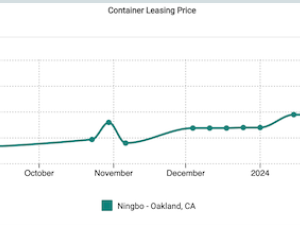'We are very excited to see the return of 'K' Line to our market as a direct calling carrier,' said Sam Ruda, Port of Portland marine and industrial development director. 'Agricultural interests in the state and the region will certainly take advantage of the service and import shippers will also benefit from it.'
There's a lot to celebrate about the return of the Japanese carrier. The Port expects that the transition from Yang Ming to 'K' Line will prove to be a net positive for container volumes thanks to the larger vessels slated to call Portland. The new ships are 5,500 TEU capacity compared to the average 3,500-3,700 TEU size of the vessels they replaced. Many exporters, who have been hoping for the return of service to Japan for years, are extremely pleased about the new calls in Tokyo, Kobe and Nagoya. 'This is good news for the state's and region's exporters,' said Ruda. Asia port coverage on the inbound leg includes direct calls in Shanghai, Hong Kong and other South China ports.
Yang Ming had been a great success story since it began calling Portland in June 2006. The carrier consistently brought higher volumes and larger ships to Portland over the past two years. While Yang Ming's vessels will no longer be calling in Portland, Yang Ming will continue to be a participant in the Portland market through their space sharing arrangement with 'K' Line, COSCO and Hanjin. This group of carriers is known as the CKYH Alliance.
Vessel deployment decisions are made by the alliance. The recent changes adjusted routings and port combinations on four transpacific loops. By making these changes, the alliance aims to streamline the CKYH service alignment and to reduce fuel consumption and carbon dioxide emissions in the process. Transpacific container trade has dramatically shifted over the last 18 months, and the CKYH Alliance of carriers has been proactive in adjusting to rising bunker fuel costs and changing global market conditions.
While there are still some unknowns, such as the net effect on volumes and use of intermodal rail, Port officials are cautiously optimistic. They expect a temporary drop in container volumes for the month of July, attributable to the gap between the last call of Yang Ming and the first call of 'K' Line, before seeing volumes rebound.






